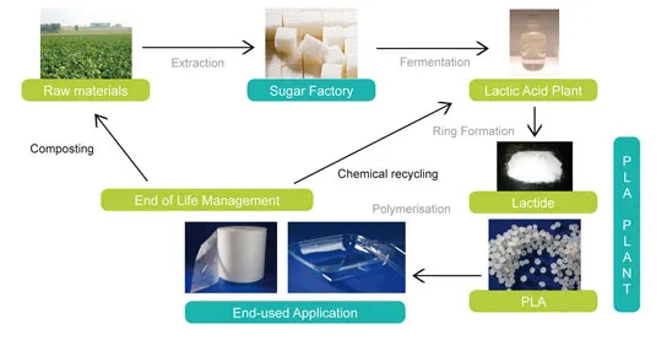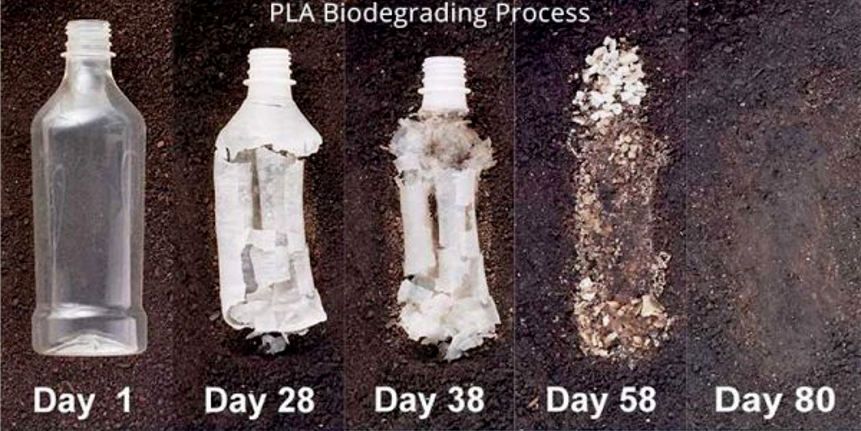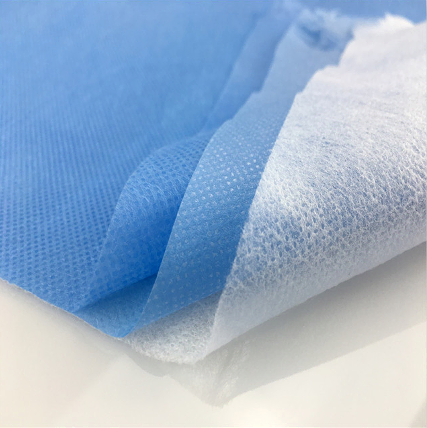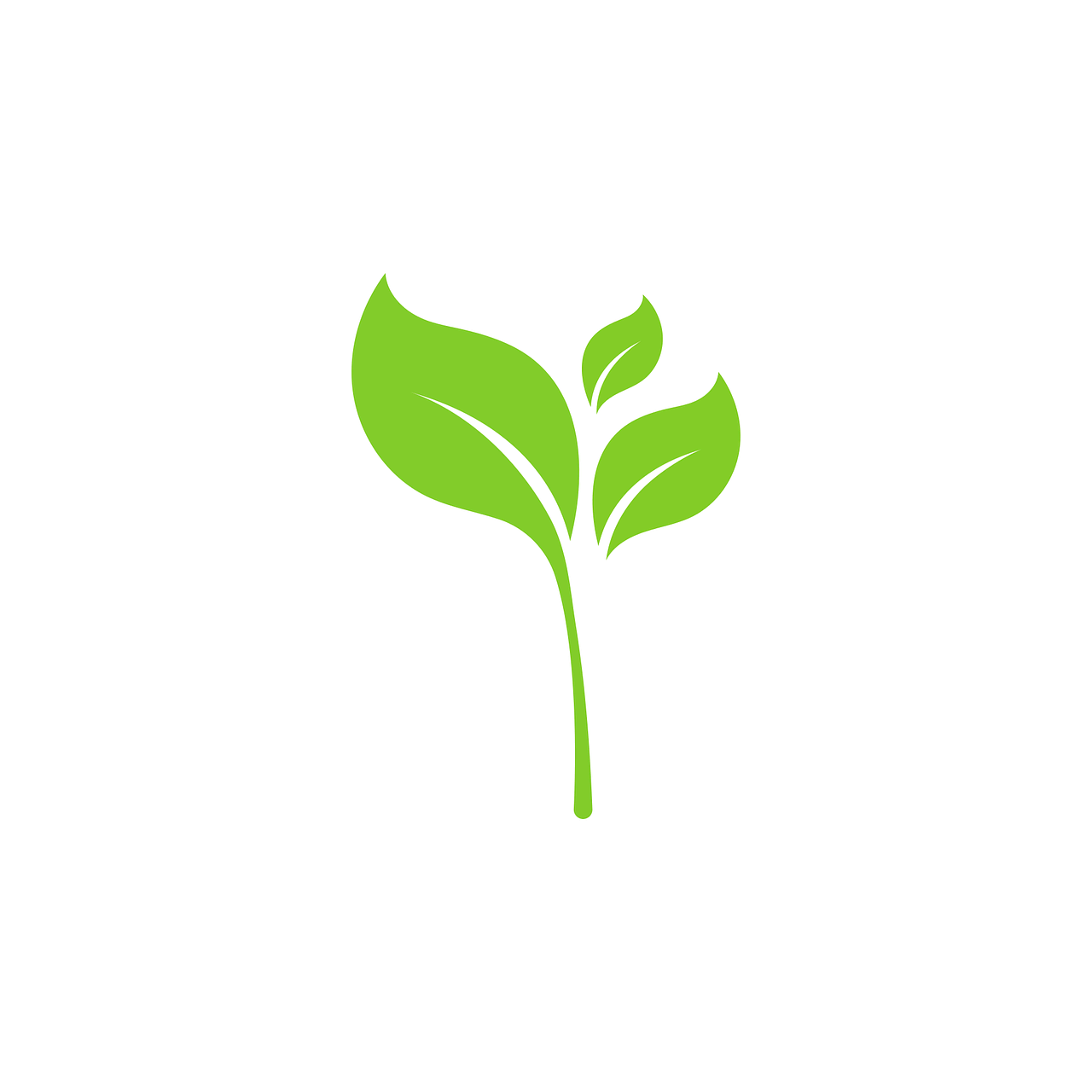What is Polylactic Acid (PLA)?
PLA is different than most thermoplastic polymers in that it is derived from renewable resources like corn starch or sugar cane.
The lifecycle below shows the extraction process and final product, as well as how the final product can be recycled too!



